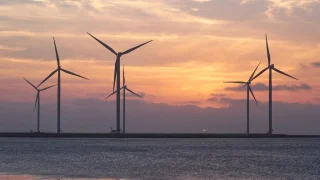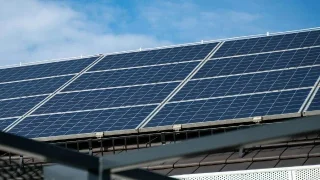

Submission to Draft 2024 Integrated System Plan
The Centre for Independent Studies (CIS) appreciates the opportunity to provide a submission to the Australian Energy Market Operator.
The CIS is a leading independent public policy think tank in Australia. It has been a strong advocate for free markets and limited government for more than 40 years. The CIS is independent and non-partisan in both its funding and research, does no commissioned research nor takes any government money to support its public policy work.
We are deeply concerned that the ISP that is presented in this Draft ISP is not a fit analysis to support AEMO’s most important public policy and regulatory functions. The first is to inform public policy regarding the choice and mix of technologies underpinning Australia’s future electricity system, and the second is to develop the Optimal Development Path (ODP) and give approval for major transmission investments.
AEMO has emphasised the importance of clearly communicating the purpose of the ISP and how the analysis is performed. Yet AEMO erroneously claims that the ISP addresses total system costs and finds the least cost pathway for the energy transition. Distributed PV, distribution network upgrades, and Consumer Energy Resources are among the largest, most critical components of the modelled energy system, and are ignored in the ISP. Numerous other elements of the energy system — including subsidies for existing coal plants, and state-government mandated transmission projects — are also omitted. If AEMO is implying that it is not its job to factor in all these costs, then it should publicly clarify that the Optimal Development Path does not represent the “least cost pathway,” but is only the least cost among a limited number of options that is not representative of the full suite of pathways available to policymakers.
Since coal plants are not considered a long-term option because of emissions targets, and nuclear energy is off the table because of federal legislation, the ISP has effectively omitted the modelling of the only credible alternatives to renewables, storage and gas that could be used as a baseline for comparison.
There is a circular logic in the way the ISP is represented by AEMO and the federal Energy Minister. On the one hand, it is used to inform policymakers of the alleged least cost option for building transmission for the grid. On the other hand, its analysis factors in the decisions of those same policymakers in determining the least cost option. Ministers can therefore point to the ISP as justification for why their priority projects and economic incentives are the least cost option for the grid — despite the fact that the ISP does not test those policy decisions in any way but rather takes them as a given. The result is that consumers are left paying for a more expensive grid because the full suite of options available to policymakers has not been tested.
The only way to break this cycle is for AEMO to either include in the ISP’s total system costs the full suite of costs listed above and therefore properly test the full range of options available to policymakers, or else make clear that its role is to only look at transmission, not the whole system, and let the government create or appoint another body to determine whole-of-system costs.
The ISP also has a crucial role to play with regards to the Feedback Loop. We emphasise that the passing of Feedback Loop notices for both HumeLink and VNI West based on the unscrutinised draft ISP is both in breach of the National Electricity Rules, and also a breach of public trust that due process and consultations will be adhered to in the energy transition. The minimum mandated consultation under NER 5.22.15(c) is a 30 day consultation, as specified in the Forecasting Best Practice Guidelines. This is the only opportunity that the public has to scrutinise the optimal development path prior to it being used for the Feedback Loop, which is the final and only protection for consumers from over-investment in transmission.
We further find that the ISP and the analysis in Appendix 6 does not support the advancement of HumeLink according to the schedule proposed by TransGrid, and the modelling of benefits associated with a substantially different timeline is grossly deceptive. Other inconsistencies and omissions in the cost benefit analysis cast doubt on the objectivity of the analysis. The Feedback Loop Notices for HumeLink and VNI west, and the Update Notice to the 2022 ISP should be recalled and proper consultation concluded on the draft, so that the public scrutiny of the Draft ISP can be used and the final 2024 ISP suitably amended before significant costs are passed on to consumers.
Aidan Morrison
Director
Centre for Independent Studies Energy Program

